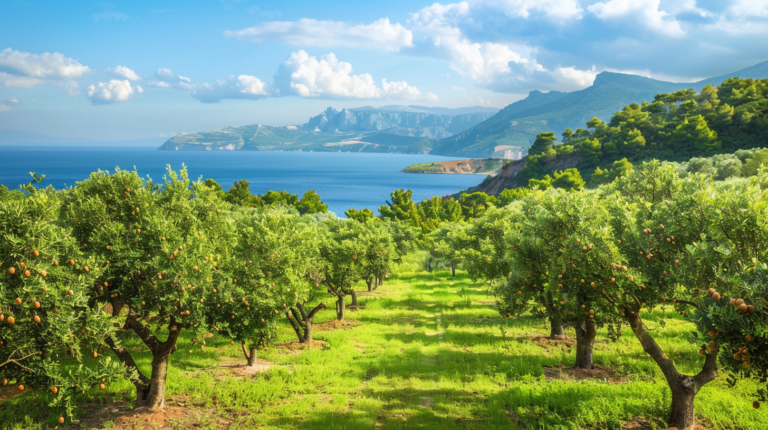Optimizing Hazelnut Production: Yield Insights Across Leading Varieties
Hazelnuts, also known as filberts, are a popular nut crop grown in various parts of the world. The yield potential of hazelnut varieties can vary significantly based on genetic factors, environmental conditions, and cultivation practices. This article explores the yield potential across different hazelnut varieties, focusing on factors such as phenology, nut traits, and environmental influences.
Key Hazelnut Varieties and Their Yield Potential
Several hazelnut varieties are cultivated globally, each with unique characteristics and yield potential. If you’re interested in a deeper dive into the different types of hazelnuts, consider Exploring the Different Types of Hazelnuts to better understand their individual traits and origins.
- Tonda Gentile Romana: This variety is known for its consistent yield performance. It has been observed to produce significant quantities of in-shell hazelnuts, making it a reliable choice for growers in suitable climates [1].
- Nocchione: Similar to Tonda Gentile Romana, Nocchione has shown consistent yield results. It is often used in conjunction with other varieties as a pollinizer due to its overlapping male blooming period [1].
- Ennis, Barcelona, and Tombul: These varieties are recognized for their potential as pollinizers. They exhibit good yield consistency and are adaptable to various environmental conditions.
- Tonda di Giffoni: Despite being recognized as a high-yield cultivar, Tonda di Giffoni did not perform well in certain environments, indicating the importance of environmental compatibility in yield potential [1].
- Negret and San Giovanni: These varieties have shown more modest yields compared to others. However, they still contribute to the diversity of hazelnut production [1].

Factors Affecting Hazelnut Yield
The yield of hazelnut varieties can be influenced by several factors, including:
- Phenology: The timing of flowering and nut development is crucial for maximizing yield. Varieties with synchronized male and female blooming periods tend to have better pollination success and higher yields [1].
- Environmental Conditions: Hazelnuts are sensitive to environmental factors such as temperature, elevation, and moisture levels. For instance, the yield of the ‘Çakıldak’ variety was found to vary significantly with elevation, indicating that altitude can impact nut production [3].
- Soil Conditions: The soil type and nutrient availability play a critical role in hazelnut yield. Soils derived from volcanic deposits, as seen in certain Italian regions, can influence the growth and yield of hazelnut trees [1].
- Cultivation Practices: Effective orchard management, including pest and disease control, fertilization, and pruning, can enhance the yield potential of hazelnut varieties [1].
Comparative Analysis of Hazelnut Varieties
A comparative analysis of hazelnut varieties reveals that yield potential is not solely dependent on genetic factors but is also significantly influenced by environmental and management practices.
| Variety | Yield Consistency | Environmental Suitability | Pollinization Role |
|---|---|---|---|
| Tonda Gentile Romana | High | Mediterranean climates | Primary cultivar |
| Nocchione | High | Mediterranean climates | Pollinizer |
| Ennis | Moderate | Versatile | Pollinizer |
| Barcelona | Moderate | Versatile | Pollinizer |
| Tombul | Moderate | Versatile | Pollinizer |
| Tonda di Giffoni | Variable | Specific regions | Primary cultivar |
| Negret | Low | Specific regions | Secondary cultivar |
| San Giovanni | Low | Specific regions | Secondary cultivar |
Environmental Influences on Yield
The impact of environmental conditions on hazelnut yield cannot be overstated. Studies have shown that temperature fluctuations, moisture availability, and soil type can all affect the yield potential of hazelnut varieties.
- Temperature: Hazelnuts are sensitive to extreme temperatures. A study examining 37 hazelnut varieties found that their yield qualities varied significantly in response to temperature decreases [4].
- Moisture: In regions with unstable moisture levels, the yield potential of hazelnut varieties can be compromised. Proper irrigation and water management practices are essential to mitigate these effects [4].
- Elevation: As mentioned earlier, elevation plays a crucial role in determining hazelnut yield. Varieties like ‘Tombul’ and ‘Çakıldak’ have shown different yield potentials at varying elevations, highlighting the need for site-specific cultivation strategies [3]. [5].
Conclusion
The yield potential of hazelnut varieties is a complex interplay of genetic, environmental, and management factors. While some varieties like Tonda Gentile Romana and Nocchione consistently perform well, others may require specific conditions to reach their full potential. Understanding these dynamics is crucial for growers aiming to optimize hazelnut production. By selecting the right variety for their specific environment and employing effective cultivation practices, farmers can enhance their yield outcomes and contribute to the global supply of this valuable nut crop.
Sources:
[1] https://www.mdpi.com/1999-4907/15/5/833
[2] https://www.researchgate.net/publication/329444892_Variations_in_some_traits_affecting_yield_in_different_hazelnut_cultivars
[3] https://www.ishs.org/ishs-article/1226_23
[4] https://www.researchgate.net/publication/376441611_Yield_qualities_of_hazelnut_varieties_in_the_zone_of_unstable_moisture
[5] https://www.ishs.org/ishs-article/1226_22






